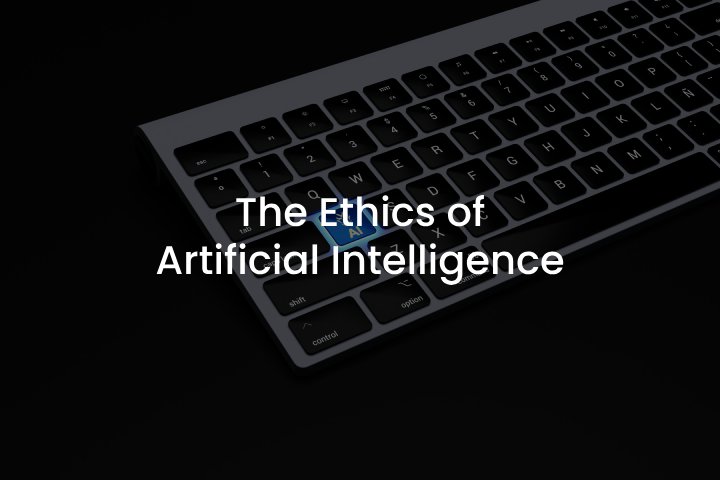
The Ethics of Artificial Intelligence: Challenges and Opportunities
AI propagation raises excitement regarding its significant benefits, including job optimization and efficiency growth. Still, innovation also sows the seeds of fear among the publicity. Is there a risk of developing higher intelligence that can outsmart or even replace humans? Indeed, AI is evolving so quickly that it requires relentless control. Existing AI tools awaken doubts about fairness, prejudice, and data safety. Other challenges may also appear with further technology invasion. So, assessing possible risks and being ready to adapt to any changes is vital.
This article focuses on AI’s potential and dangers, exploring what governments and individuals should pay attention to as the approach revolutionizes.
The skewed perspective of an AI algorithm
Although AI has become a powerful helper in society’s everyday lives, it often translates biases sourced from its training data. Recent research reveals that this skewed perspective is not perceived as a technical glitch and can sometimes negatively impact human behavior. Thus, users who undoubtedly rely on generated suggestions tend to adopt similar judgments in decision-making even when interaction with Artificial Intelligence is completed. False positive opinions reflected in human habits can later be repetitively translated to AI-driven tools, triggering an eternal cycle of biases.
For example, AI “hallucinations” can negatively impact social groups. While smartphones’ inability to recognize speech, like non-American accents, can inconvenience users, other cases, such as biased facial recognition tools (only educated on a specific subset of people), may lead to increased wrongful arrests of individuals.
With AI being widely integrated into various spheres of life, understanding and mitigating these errors is vital to prevent the spreading of harmful stereotypes and to guarantee fair and reliable results.
Key Risks Associated with AI and Privacy
AI software relies on vast datasets to handle customers’ inquiries within seconds and provide a comprehensive response. As the system still evolves and increases its knowledge base, a reasonable question arises: How does it gather, store, and apply personal information? While transformative, AI poses significant risks to private data protection.
If sensitive content like health records or biometrics is mishandled or accessed without authorization, we heighten the risk of confidentiality breaches. Moreover, algorithmic bias can trigger intolerance in critical areas like hiring or law and order authorities, while inadequate assessment of AI-generated content can destroy privacy rights. Additionally, monitoring systems powered by AI allow extensive tracking of people, expressing doubts about the legitimacy of such methods and their compliance with human liberties.
We can take the following steps to tackle the described issues:
- Incorporate solid security measures (encryption, access authentication) complying with privacy regulations, such as GDPR and CCPA.
- Employ bias mitigation techniques, such as fairness testing, to prioritize equitable outcomes.
- Adopt preserving software, ethical data guidelines, and anonymization to safeguard individual privacy.
- Strengthen transparency and explainability by providing customer instructions on interpreting AI-driven insights and correcting biased results.
The impact of AI on employment
AI is influencing the job market by automating daily tasks and improving effectiveness across dozens of areas, such as healthcare and educational institutions, e-commerce, finances, etc. Still, this positive impact leads to job displacement, particularly for employees performing repetitive or predictable work. Thus, AI-driven tools can now take positions in manufacturing, retail, customer service, and data analysis without reliance on human resources.
However, AI also creates new opportunities. So, we can’t 100% state that it increases unemployment. Vice versa, while some jobs are at risk, others that didn’t previously exist are emerging. For example, it boosts demand for AI development, data science, and machine learning experts. That’s why institutions must focus on targeted reskilling strategies for workers and ensure hassle-free adaptation to new environments for exploring hidden potential.
Conclusions
The expansion of AI presents both bright opportunities and diverse challenges. Along with enhancing workflows and increasing efficiency, it raises doubts about data security, bias, and employment. As technology isn’t going to pause evolving, solving these issues requires robust regulations, transparency, and risk mitigation to guarantee equitable outcomes.
Developing proactive strategies to balance AI’s capabilities and troubles is essential. Under such circumstances, we could unleash the advantages of Artificial Intelligence while securing against potential harm.


